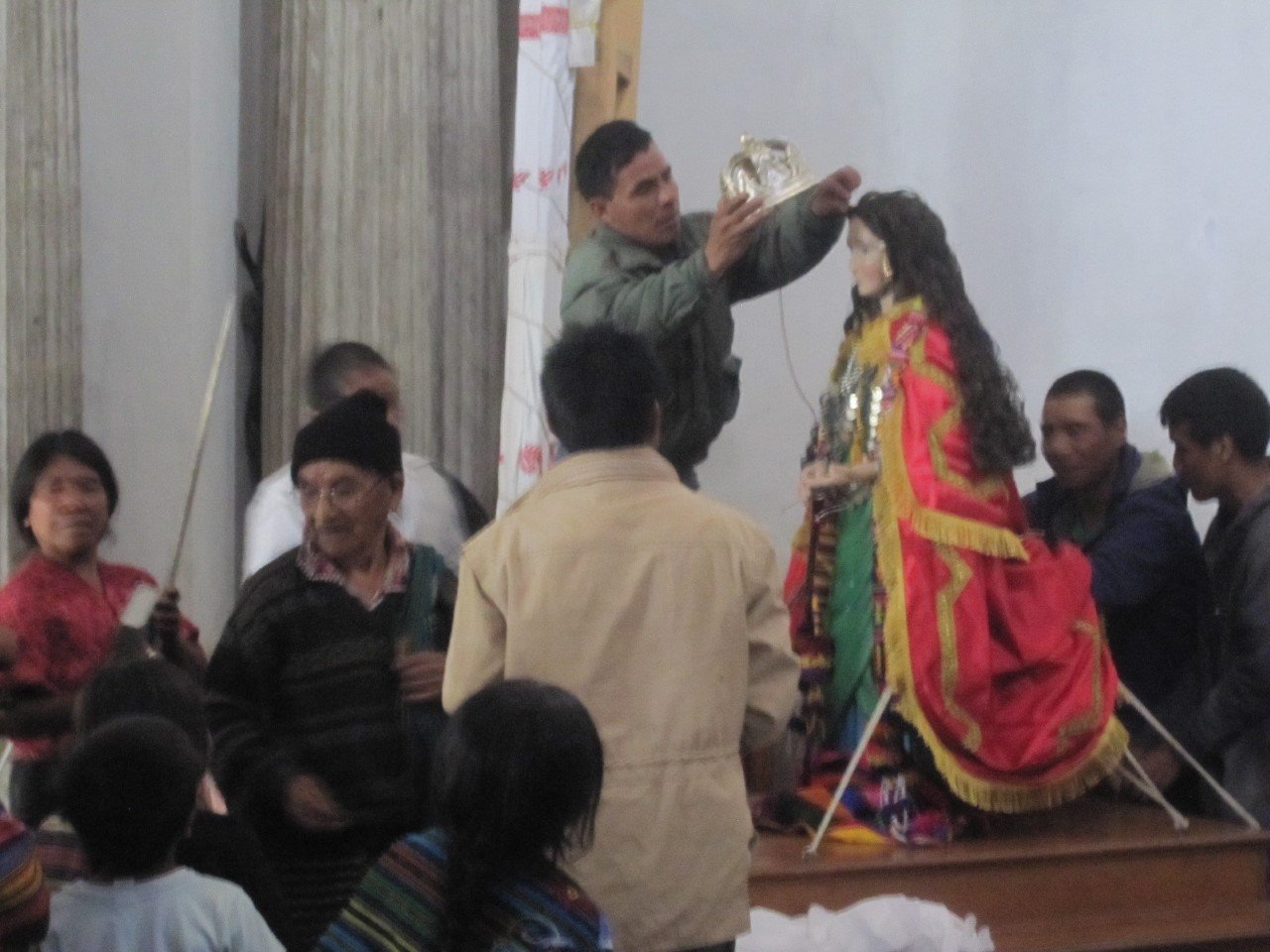Prayer in the Highlands of Guatemala
Pictured are people of Ixtahuacan preparing the statue of Santa Catalina for the annual novena.
Prayer in the Highlands of Guatemala
Prayer is as natural as breathing for people in the Highlands of Guatemala – our Spokane Mission area. “Que Dios le acompañe” (Spanish) or “Dios ka tu ka nike” (K’iche’) means “May God be with you” and is as common as “Hi! How are you?” among the Mayan people of Ixtahuacan.
Reference to God in everyday speech is customary and connection to God through prayer is an integral part of daily life. People pray the rosary in communities and homes and may walk up to three hours to participate in Mass and other religious celebrations.
The parish of Ixtahuacan consists of the main church Santa Catalina in the town of Ixtahuacan and thirty small churches in outlying communities. Pastor Fr. Nicasio and Associate Pastor Fr. Estalislau Zavala say Mass at least once a month in each community. Fr. Zavala was assigned to Santa Catalina seven months ago, the first time that two priests have served this large and widespread mountainous community.
Fr. Nicasio during Mass at Santa Catalina parish, Ixtahuacan
On weekends when a priest is not available for Mass, trained catechists lead services that include prayer, Bible readings, spiritual teachings, and Holy Communion and offer sacramental preparations. The catechists, who number over 100 and are trained monthly by Fr. Nicasio and Sr. Rosita, Sisters of Charity NY, also hold prayer meetings in small communities two or three times a week.
Prayer during Mass can often lead to longer services, especially when there are Baptisms, First Communions, Confirmations, or wedding vows. On special occasions, Mass may last up to three hours, with many people standing during the entire service.
Other times, parishioners visit the church, kneel on the bare floor in front of the altar, then “walk on their knees” closer to the altar as they chant and pray aloud with heartfelt petitions.
Processions are common occurrences in Ixtahuacan, centered around holy days such as Santa Catalina’s feast day, the feast of Corpus Christi, and Holy Week. In preparation for the feast day of patron saint Santa Catalina, a novena begins on November 16th. Santa Catalina’s statue is removed from behind the altar and thoroughly cleaned. The ritual includes washing her clothes, changing her earrings, combing her hair, and adorning her in homemade garments. On November 24th, a procession begins with 4 pm Mass. Then the beautified statue of Santa Catalina is carried from the church and the procession winds through town for two hours, accompanied by singing parishioners. The novena concludes with Mass on Santa Catalina’s feast day, November 25th.
Fr. Nicasio stated that he feels his most significant role is in the formation of faith in the communities, as people share their faith with family, friends, and others. He is proud to see the communities gather during novenas for festivities as it shows unity in their faith. He also reflected on the long distances people travel for processions, usually by foot or crowded into the bed of a pickup truck, as an expression of their dedication to their faith.
The integration of faith in life and language is evident, even in the typical response to the common farewell “see you later”: “si Dios quiere”, that is, “God willing.”



